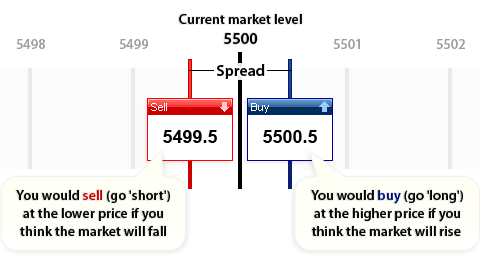Alternatively, individuals paying an annuity due lose out on the opportunity to use the funds for an entire period. An annuity due payment is a recurring issuance of money upon the beginning of a period. Alternatively, an ordinary annuity payment is a recurring issuance of money at the end of a period. Contracts and business agreements outline this payment, and it is based on when the benefit is received.
Rodriguez will need to have $466,863.69 in his account when he turns 65 if he wants to receive 13 years of $50,000 payments. Email or call our representatives annuity due formula to find the worth of these more complex annuity payment types. Use your estimate as a starting point for a conversation with a financial professional.
- Recall from Time Value of Money I that the formula for compounding is (1 + i)N, where i is the interest rate and N is the number of periods.
- It’s critical to know the present value of an annuity when deciding if you should sell your annuity for a lump sum of cash.
- In regards to an annuity formula, present value is the amount of money you need today to fund a series of future annuity payments.
- That’s why an estimate from an online calculator will likely differ somewhat from the result of the present value formula discussed earlier.
The formula is calculated based on two important aspects – The present Value of the Ordinary Annuity and the Present Value of the Due Annuity. The purchase of an annuity is usually done with the assistance of an insurance agent or a financial advisor. Instead, you’re more likely to be sitting with an insurance agent or advisor whom you trust and fielding suggestions. Since the math is straightforward here, let’s say that you’ve been fortunate enough to secure a 10% interest rate.
What is Present Value of Annuity Due Formula?
The annuity formula is used to find the present and future value of an amount. The annuity formula is explained below along with solved examples. More specifically, an annuity formula helps find the values for annuity payments and annuity due.
Using Generic Formula to Calculate Annuity Due in Excel
The high rate is locked in based partly on our commitment beginning today, even though we will invest no money until the end of the first year. To determine accurately the balance owing on any loan at any point in time, always start with the loan’s starting principal and then deduct the payments made. This means a future value calculation using the loan’s interest rate. This section develops present value formulas for both ordinary annuities and annuities due. Like future value calculations, these formulas accommodate both simple and general annuities as needed. From investments, we will then extend annuity calculations to loans as well.
Because of the time value of money, money received or paid out today is worth more than the same amount of money will be in the future. That’s because the money can be invested and allowed to grow over time. By the same logic, a lump sum of $5,000 today is worth more than a series of five $1,000 annuity payments spread out over five years. The present value of an annuity is the amount of money needed today to cover future annuity payments.
Annuity Formula
Discuss your quote with one of our trusted partners, who can explain the present value of your payments in more detail. You can plug this information into a formula to calculate an annuity’s present value. Calculating present value is part of determining how much your annuity is worth — and whether you are getting a fair deal when you sell your payments. State and federal Structured Settlement Protection Acts require factoring companies to disclose important information to customers, including the discount rate, during the selling process. They can be higher, but they usually fall somewhere in the middle.
The effect of the discount rate on the future value of an annuity is the opposite of how it works with the present value. With future value, the value goes up as the discount rate (interest rate) goes up. Because there are two types of annuities (ordinary annuity and annuity due), there are two ways to calculate present value.
As with future value calculations, calculating present values by manually moving each payment to its present value is extremely time consuming when there are more than a few payments. Similarly, annuity formulas allow you to move all payments simultaneously in a single calculation. The formulas for ordinary annuities and annuities due are presented together. An annuity is an insurance product designed to generate payments immediately or in the future to the annuity owner or a designated payee. The word present value in the annuity formula refers to the amount of money needed today to fund a series of future annuity payments.
Sortino Ratio: Definition, Formula, Calculation, And Example
For example, if an individual could earn a 5% return by investing in a high-quality corporate bond, they might use a 5% discount rate when calculating the present value of an annuity. The smallest discount rate used in these calculations is the risk-free rate of return. Treasury https://accounting-services.net/ bonds are generally considered to be the closest thing to a risk-free investment, so their return is often used for this purpose. The calculations above, representing the present values of ordinary annuities and annuities due, have been presented on an annual basis.
Many monthly bills, such as rent, car payments, and cellphone payments, are annuities due because the beneficiary must pay at the beginning of the billing period. Insurance expenses are typically annuities due as the insurer requires payment at the start of each coverage period. Annuity due situations also typically arise relating to saving for retirement or putting money aside for a specific purpose. The timing of an annuity payment is critical based on opportunity costs. The collector of the payment may invest an annuity due payment collected at the beginning of the month to generate interest or capital gains. This is why an annuity due is more beneficial for the recipient as they have the potential to use funds faster.
The figure shows the present value and interest amounts in the transaction. In return, it receives 35 payments of $1,282.20 and one payment of $1,282.49 for a nominal total of $46,159.49. As a consumer, you are probably most interested in the balance owing on any of your debts at any given point. Up to this point, this chapter has addressed only the concept of investment annuities.
A Guide to Selling Your Structured Settlement Payments
You buy an annuity either with a single payment or a series of payments, and you receive a lump-sum payout shortly after purchasing the annuity or a series of payouts over time. Previously, it was discussed how the last payment in a loan almost always differs from every other payment in the annuity because of the rounding discrepancy in the annuity payment amount. Present value calculations are influenced by when annuity payments are disbursed — either at the beginning or at the end of a period.












